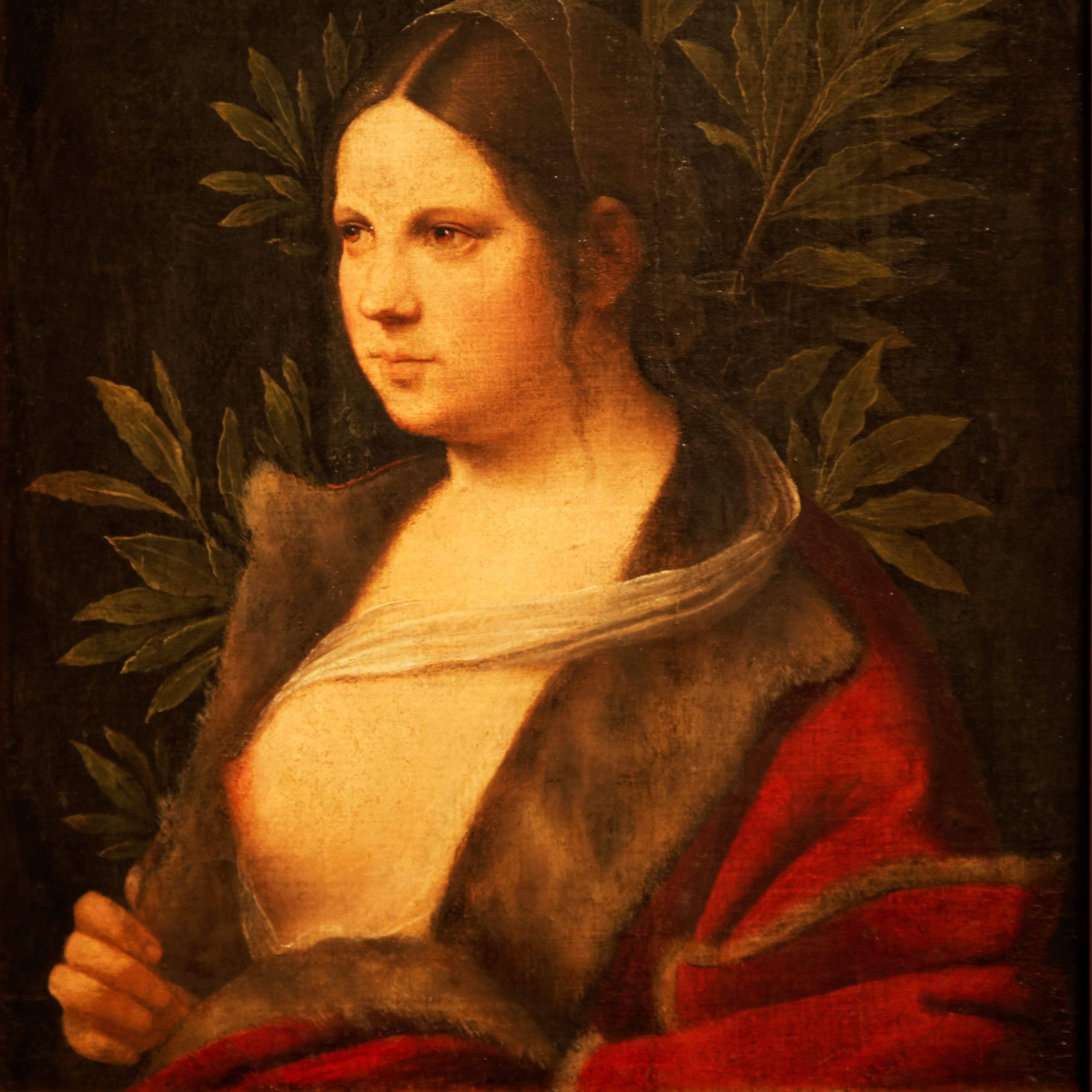
A little girl is sitting on two huge cushions that allow her to be at the same height as the table next to her, covered with old pink velvet and on which a watch is placed. She is sitting in a loggia that opens onto a large park. She is holding a shell and a straw and is having fun blowing soap bubbles, together with a parrot at her feet and a dog that is happily running towards the bubble. She is sumptuously dressed in a gold damask gown with a matching blue cloak on the reverse side of the gown, and wears jewellery on her arm, shoulder and a pearl tiara in her hair. A noble origin?
Indeed, this little girl is Mademoiselle de Tours, the fifth natural child of Louis XIV and his mistress, Madame de Montespan. Born in 1674, she died in 1681 at the age of seven. Her portrait was commissioned from Pierre Mignard.
Born in Troyes in 1612, Pierre Mignard began his apprenticeship in Bourges, then travelled to Rome before returning to France in 1657. He quickly attracted interest thanks to his talents as a portraitist and the creation of large decorative compositions, such as the dome of the Val-de-Grâce church in Paris. A few years after the completion of this portrait, he was appointed first painter to the king by Louis XIV.
In this work, the painter places his subject in the centre of the painting, enclosed in a triangle, framed by the two verticals formed by the columns. This composition, which is very classical, brings stability to the composition.

What is less classical is Mignard’s depiction of childhood, at a time when children were often shown as miniature adults in very static compositions. This is the case, for example, in the portrait of Mademoiselle de Blois, another natural daughter of Louis XIV.

In contrast to this type of very « posed » portrait, Mignard shows the little girl in an attitude more in keeping with childhood: she is busy playing, in the company of her favourite animals. By placing her on large cushions, the painter accentuates her small size. He also gives her a less severe attitude by shifting one knee higher than the other, which creates a line that responds to the one formed by the dog jumping towards its mistress. These two ascending lines make the composition more dynamic.

What stands out in this portrait of a child is the slightly sad face, which looks at the viewer with a slightly melancholic air.
In fact, the portrait was painted in 1681 or 1682, just after the death of Mademoiselle de Tours. It is therefore a posthumous portrait. The various details in the painting are indications of this.
The watch on the table is a classic symbol of the passage of time. The soap bubble evokes the fragility of life, ready to burst at any moment.

The landscape itself is an autumn landscape, with a light that is that of the setting sun. It is possible that the dog is jumping towards his mistress with the knowledge that the bubble is a bad omen. The parrot, on the other hand, is a symbol of purity, associated with Mary’s virginity, as can be seen in Van Eyck and Van Heemskerck. It was thought that the bird always repeated the word AVE, like the angel Gabriel addressing Mary with the words Ave Maria. Here it refers to the innocence of the little girl.





We have seen that children’s portraits are still very similar to adult portraits. Since the Renaissance, royal children have been painted above all, and the portraits serve to show dynastic continuity. Children are only seen as future rulers. The poses are rigid and the faces impassive.




From the 18th century onwards, the child took on a more important role in society, particularly under the influence of Rousseau. The portraits became more and more intimate, family-oriented and often showing the joys of childhood.


In this painting, Pierre Mignard delivers a portrait of a little girl, ahead of the spirit of his time, succeeding in mixing a lively and dynamic aspect with a melancholic feeling in this posthumous portrait. With its sumptuous colours and endearing details, it is undoubtedly one of his most beautiful portraits.
And you, what dou you think about it ?

Thank you for introducing me to Pierre Mignard. Would you allow me to reblog with one image, a short quote, and links to your full post?
J’aimeJ’aime
Without any problem as soon as you include a link to my full post.
Thanks for your reading. I hope you can have interest in reading my blog.
Best regards,
J’aimeAimé par 1 personne
Thanks! Scheduled for Friday, September 30.
J’aimeJ’aime